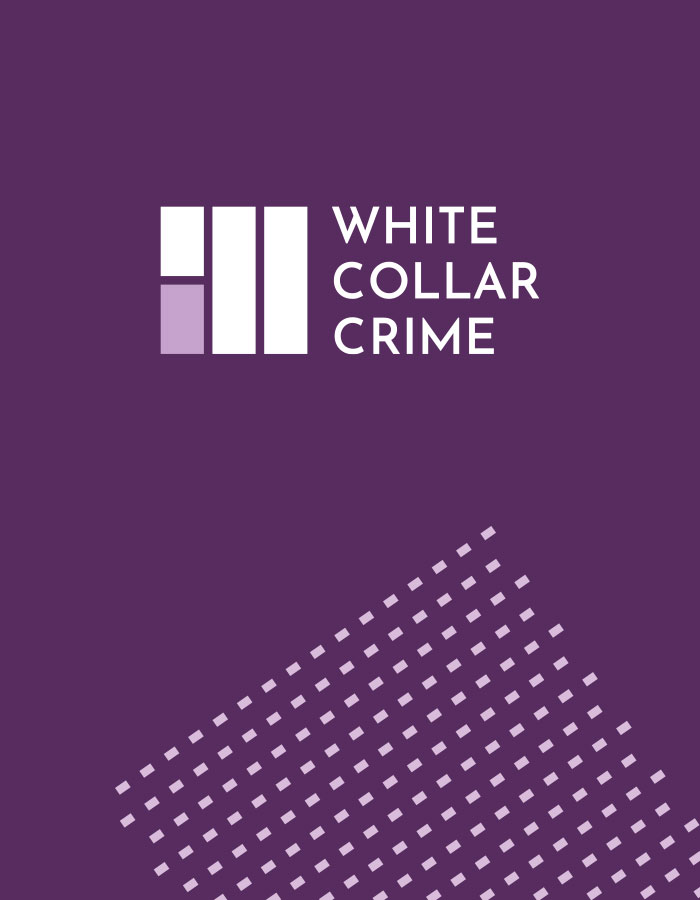Speed read: On 11 July 2018, the Supreme Court handed down R v AB and CD [2018] UKSC 36, an appeal of a pre-trial ruling on the test for ‘suspicion’ in the context of anti-terrorist financing. This piece distils the key findings from the decision and explores the implications for ‘suspicion’ in the context of the principal and secondary money laundering offences in Part 7 of the Proceeds of Crime Act 2002.
The Supreme Court’s recent decision of R v AB and CD [2018] UKSC 36 puts to rest any doubt that the offence of being concerned in terrorist funding, contrary to section 17 of the Terrorism Act 2000 (TACT), is focused on an objective suspicion of terrorist financing as opposed to one subjectively held. Pursuant to section 17 of TACT, a person commits an offence if ‘he enters into or becomes concerned in an arrangement as a result of which money or other property is made available’ and ‘if knows or has reasonable cause to suspect that [money or other property] may be used for the purposes of terrorism.’ The Supreme Court has since held that the offence can be committed where the information known to a person, examined objectively, gives reasonable cause to suspect that property will be used for terrorist purposes even if the person did not actually hold any such suspicion.
At first blush, the decision is informative of the meaning of ‘suspicion’ under Part 7 Proceeds of Crime Act 2002 (POCA). Section 330 imposes a duty to report a suspicion of money laundering, including where there are reasonable grounds to suspect. The duty is backed by criminal sanction. It is also an offence, contrary to section 328, to be ‘concerned in an arrangement’ to facilitate money laundering. But whilst the language in the anti-money laundering and anti-terrorist financing regimes bear similarities, the outcome in AB and CD is the product of the Court’s careful statutory construction of section 17 TACT. There are discernible differences between POCA and TACT. For this reason, the extent to which the AB and CD informs the interpretation of the money laundering offence provisions in Part 7 POCA is limited.
Facts of AB and CD
Little is disclosed in the judgment about the appellants due to the reporting restrictions applicable to the hearing. What is clear is that the appellants were facing a Crown Court trial for the offence of entering in to funding arrangements connected with terrorism, contrary to section 17 TACT. The underlying allegation related to the sending of money overseas or arranging to do so. In anticipation of the trial, a preparatory ruling was sought from the trial judge on the meaning of ‘reasonable cause to suspect’ in section 17(b) TACT. Both the trial judge and the Court of Appeal considered that the language in section 17 was unequivocal and that it was sufficient if the information known to the accused, assessed objectively, gave reasonable cause to suspect that the money may be used for the purposes of terrorism. The competing argument – that proof of the offence required evidence to be adduced that the appellants actually harboured a suspicion and that such a suspicion was reasonably held – was rejected and it is this point that was taken to the Supreme Court.
Axiomatically, the central argument advanced by the appellants provides a greater level of protection to the accused. On the appeal, the appellants contended that the language of the offence in section 17 TACT was capable of this more protective interpretation and that there was a well-established presumption that a mind guilty of a criminal offence must actually hold the requisite mental state. This, it was said, was particularly so in serious criminal offences as opposed to regulatory offences. It was further contended that the Court of Appeal erred in giving too much weight to TACT’s objective of protecting the public from terrorism and that the objective did not justify the weakening of the well-established presumption at criminal law. [1]
Reasoning
Notwithstanding the lucidity of the appellants’ arguments, they did not find favour with the Supreme Court. A careful statutory construction of section 17 TACT was undertaken and proved key to the dismissal of the appeal. Although the presumption as to mens rea, relied on by the appellants and supported by a long line of authority, is greatly important, it is not a power to substitute the plain language used by Parliament. Parliamentary sovereignty requires a court as its ‘first duty’ to consider the words of a statute and parliamentary intent. Undertaking this exercise, Lord Hughes, writing the judgment of the Court, had regard to the predecessors to section 17 TACT and traced parliament’s deliberate change to the requisite mental state. As a starting point, the offence in section 10(2) of the Prevention of Terrorism (Temporary Provisions) Act 1976 stated:
“if any person gives, lends or otherwise makes available to any other person, whether for consideration or not, any money or other property, knowing or suspecting that the money or other property will or may be applied or used for or in connection with the commission, preparation or institution of acts of terrorism to which this section applies, he shall be guilty of an offence.” (emphasis added)
Although there was no reason to explore the history of the 1976 Act in the judgment, that Act was passed following terrorist attacks by the ‘Birmingham Six’. In 1989, there was a marked language change when the Act was replaced by the Prevention of Terrorism Act 1989. Appearing within a new Part III expressly criminalising terrorist financing, new section 9 prohibited entering into an arrangement ‘knowing or having reasonable cause to suspect’ that money would be used for terrorist financing. Since then, the offence of being concerned in an arrangement for terrorist funding has maintained this language notwithstanding the replacement of the 1989 Act by TACT. At paragraph [19], the Court observed that ‘[t]hat change can only have been intended to remove the requirement for proof of actual suspicion. It is not open to the court to ignore this kind of clear Parliamentary decision’.
Analysis
The Supreme Court’s conclusion in respect of section 17(b) TACT is consistent with an earlier decision of Scotland’s High Court of Justiciary in 2012. Although not cited in the judgment, in Nasserdine Menni v Her Majesty’s Advocate, [2] the interpretation of section 17 TACT arose for consideration following the appellant’s conviction in the High Court at Glasgow for sending £5,725 to England. A similar argument to those advanced by the appellants in AB and CD, supported by the well-established presumption applicable in criminal cases, was raised but rejected by the High Court of Justiciary owing to the clear language in section 17.
It follows that it is now beyond doubt that the commission of an offence under section 17 TACT does not require any proof that a suspicion of terrorist financing was subjectively held. That said, there remain ambiguities in the application of section 17 TACT that are yet to be addressed. In deconstructing section 17, the Supreme Court referred to ‘information known’ to the accused which, in essence, gives reasonable cause to suspect terrorist financing. However, the question arises as to whether the prosecution must prove that the accused actually knew the information from which reasonable suspicion is inferred or whether it is sufficient that the accused would have known or had the information in their possession and, thinking reasonably, would have formed a suspicion of terrorist financing. There was no need for the Supreme Court to consider this issue in AB and CD. The gravity of the criminal offence supports the former understanding but, at present, it is far from clear.
Implications for the money laundering regime
A further question arises as to the impact of AB and CD on the principal and secondary money laundering offences in Part 7 POCA. All of the offences focus on knowledge or suspicion of money laundering or criminal property to some degree.
Notably, the Court recognised the similarity in the language used in the anti-terrorist financing and anti-money laundering regimes. In its reasons, the Court considered the House of Lords decision in R v Saik [2006] UKHL 18 which had regard to the money laundering offences under section 93A – C Criminal Justice Act 1988 which were later replaced by sections 327 – 329 POCA. In Saik, the House of Lords concluded that the words ‘knowing or having reasonable grounds to suspect that any property is, or in whole or in part…another person’s proceeds of criminal conduct’ required proof that the defendant held an actual suspicion and that they did so on reasonable grounds. In developing this conclusion, Lord Hope drew a correlation between the offence and the statutory power of arrest by police offers and considered that for one to act within the powers given by the statute, actual suspicion was required. He stated that, ‘The objective test is introduced in the interests of fairness, to ensure that the suspicion has a reasonable basis for it. The subjective test - actual suspicion - is not enough. The objective test - that there were reasonable grounds for it - must be satisfied too.’ [3] Since then, as the Law Commission notes in its July 2018 consultation paper [4] on the Suspicious Activity Report regime, the interpretation in Saik has been widely understood as laying down ‘a cumulative test’ for suspicion for the purposes of the principal offences of money laundering in sections 327 – 329 POCA.
Notwithstanding the fifteen years since POCA was introduced, the Saik interpretation is yet to be fully tested in the courts in the context of Part 7 POCA. Even so, when it eventually is, the need for a subjective suspicion for proof of a principal money laundering offence is unlikely to change. The definition of ‘criminal property’ which is central to an offence of money laundering contrary to sections 327 – 329 POCA and appears in section 340 POCA requires that a person ‘know or suspect’ criminal property. No reference is made to ‘reasonable grounds to suspect’ or ‘reasonable cause to suspect’. There is a positive requirement and a person could not be convicted solely on the basis of an objective suspicion.
Language differences
Consequently, there is a striking difference between the offence of being concerned in an arrangement to fund terrorism, contrary to section 17 TACT, and being concerned in an arrangement to facilitate money laundering, contrary to section 328 POCA. On a basic level, the primacy of the terrorist threat must explain the difference in language. As the Supreme Court has recognised in AB and CD, by inserting the words ‘reasonable cause to suspect’ Parliament clearly intended that the offence in section 17 TACT could be committed by a person who does not possess any actual suspicion. Parliament has not expressed any such intention in respect of sections 327 – 329 POCA.
The situation is different for an offence under section 330 POCA. The prevailing view is that the section 330 secondary offence of failing to disclose a suspicion of money laundering which applies to the regulated professional sector is distinct from the principal offences. AML Guidance for the Legal Sector, for instance, refers to the offence as focused on an objective test for suspicion. [5] The language in section 330 is ‘reasonable grounds to suspect’ money laundering and the offence assures disclosures by the professional sector. A similar offence appears in section 21A of TACT in relation to disclosures of terrorist financing suspicion.
When it was introduced in 2003, the Explanatory Notes to POCA expressly referred to a ‘negligence test’ for professionals who should be alert to money laundering. Accordingly, there is a lower mens rea in section 330 which can be traced to parliamentary intent. The objective approach to suspicion in section 330 POCA is consistent with the Court’s reading of ‘reasonable cause to suspect’ in section 17 TACT. But an exercise of statutory construction has been undertaken in AB and CD and although the Court’s findings do bear upon POCA, the same exercise will have to be undertaken in relation to Part 7 POCA if there is to be any real clarity over the meaning of ‘suspicion’ for the purposes of the anti-money laundering regime.
Bright Line Law is grateful to Jessica Twumasi for her assistance with this article.
[1] Para 7.
[2] Nasserdine Menni v Her Majesty’s Advocate 2014 S.C.L 191 para 9.
[3] R v Saik [2006] UKHL 18 para 51.
[4] Para 7.10 – 7.14.
[5] See for instance para 6.3.3 of the 2018 Legal Sector Affinity Group AML Guidance.







